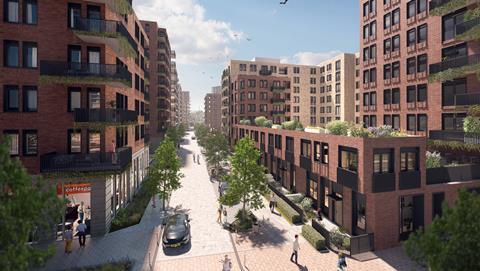Impact Developments secures ‘resolution to grant planning permission’ for £350m Rom Valley Gardens project

Plans by Impact Developments for 972 homes to be built on a former ice rink in Romford, Essex, have received resolution to grant planning permission from Havering council.
Impact’s plans will now go to the Greater London Authority for Stage 2 approval, and are subject to the finalisation of a Section 106 agreement.
The site of the £350m regeneration scheme, close to the planned Crossrail station in Romford, already has consent for 620 homes. But this application increases the number of homes to 972, while raising the affordable housing provision to 24%, by habitable room.
Robert Whitton, founder and chief executive of Impact Capital Group, said he wanted Rom Valley Gardens to “set a benchmark in quality design and placemaking”.
He added: “Rom Valley Gardens will be our flagship regeneration scheme and represents Impact’s vision to create a sustainable housing model that will help to revive underutilised sites in Britain’s cities and towns. There is a housing emergency in the UK and new quality and affordable homes are urgently needed for both rental and sale.”
The development will be created using modern construction methods, using Impact’s own modular construction factory, and will include a new clinical diagnostic hub for the NHS, to add to the existing Queen’s Hospital’s services. Construction should start in the fourth quarter of this year.
Nick Shattock, chief executive of Impact Developments, said: “Rom Valley Gardens is designed as an urban village, integrated with Queen’s Hospital at several levels and will set a quality precedent for other central Romford developments. We are conscious of the trust placed in us by Havering to deliver this major scheme and look forward to owning and managing this neighbourhood for the long term.”
The group will be able to assemble a £1billion development pipeline with £100m of equity from a private family office, which funded the purchase of the Romford site, as well as additional borrowing and embodied equity.











No comments yet